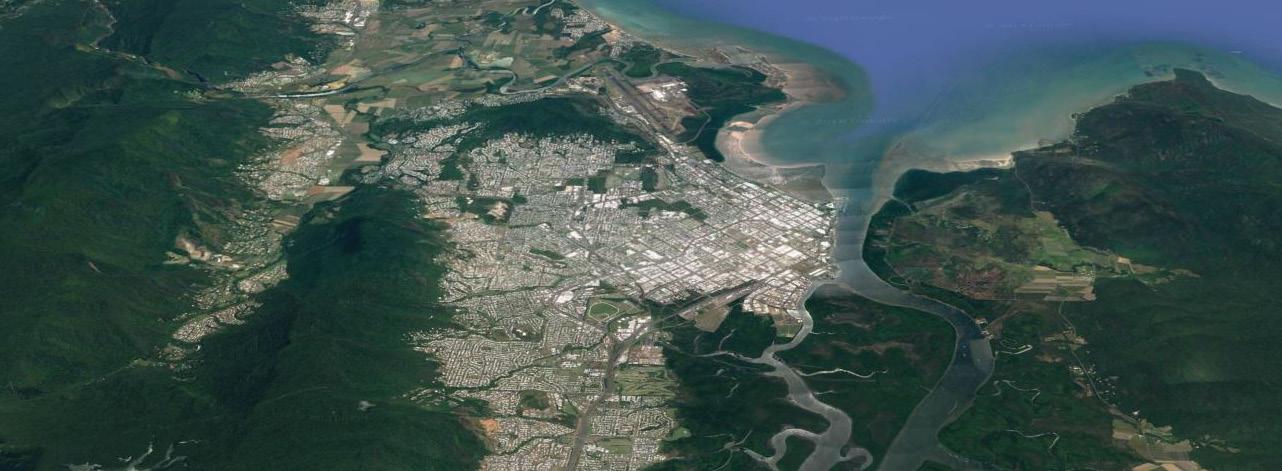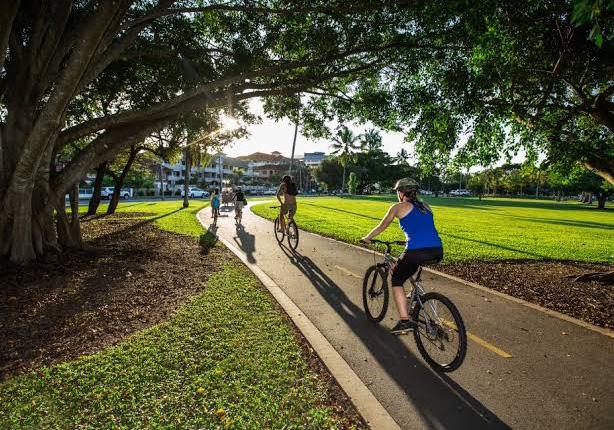
5 minute read
Population and migration strategy
COUNCIL: ALL TNQ STATE ELECTORATE: ALL TNQ FEDERAL ELECTORATE: KENNEDY, LEICHHARDT
THE ISSUE
Advertisement
In 2018 Australia’s population reached 25 million people, two decades earlier than predicted, which has put unprecedented pressure on metropolitan capitals. Significant population growth in capital cities has created a settlement imbalance, leading to sizable infrastructure investment in cities and an infrastructure deficit in the regions.
While population growth has been centred on capital cities, Australian residents are showing they want to live in regional areas with more than 400,000 people choosing to relocate from the city to the regions in the five years to 2016. COVID-19 has accelerated this trend, with net migration to regional areas 5% higher in 20201. Migration away from capital cities has predominantly occurred in the 30-39 year and 60–69 year age groups, leading to unexpected increased demand for regional school enrolments and health care services, and demonstrating the important role of population policy planning for regional locations.
To encourage the trend of regional migration to continue and ensure that relocation is a real and viable alternative to capital cities, there is a need to rebalance national infrastructure spending away from urban fringe locations such as the Gold Coast to regional city locations such as Cairns. Infrastructure investment will improve the accessibility and liveability of regional cities and in the case of Cairns, deliver on the Federal Government’s northern Australia agenda for economic growth.
Population growth should not be a side effect of other policies as it leads to unplanned urban growth and insufficient infrastructure, and this has been the experience to date in northern Queensland. The Cairns Region Population and Migration Strategy will therefore provide a strategic approach to population that demonstrates the needs of the region, leading to proactive plans that drive catalytic projects such as roads, health services and water infrastructure plus a supportive policy framework. The strategy will inform forward planning for government at all levels, delivering on the objectives of the Commonwealth’s Centre for Population.
BRIEFING NOTE SUMMARY
• A Population and Migration
Strategy will provide the framework to attract people to Tropical North Queensland and encourage people to stay long-term. • COVID-19 has accelerated remote working, leading to greater migration to regional
Australia • Australian residents are showing they want to live in regional areas. Policy that supports population migration to the regions can aid in balancing Australia’s population growth trends, which are currently centred around metropolitan areas. • Development of a Cairns
Region Population and
Migration Strategy requires shared State and Federal
Government investment of approximately $1.5 million and supports the objectives of the Commonwealth’s Centre for Population.
BACKGROUND
In December 2018, population became a standing agenda item for the then Council of Australian Governments (COAG), placing it firmly on the national policy agenda. In delivering a new approach to population planning, the State Treasurers and the Australian Local Government Association have been tasked with developing a national framework through a bottom-up approach to population policy development.
In support of this objective, a national population and planning framework was released by the Federal Government in March 2019 and in October 2019, a new Centre for Population was launched to be based inside of Treasury. The Centre is the primary location for all population related matters and works closely with the states and territories, academics and think tanks in order to share data, research, ideas and expertise on population.
Far North Queensland is the largest region in northern Australia by population (279,948 people), and whilst it has an established track record of population growth averaging 1.1% per annum, this is 55% lower than the Queensland State average of 1.7%. The population growth rate of the Cairns region has been in steady decline since 2010 and at 0.9% in 2019, is well below the long term average of 2.6% 2 .
To achieve the region’s economic potential and to help fill current employment gaps, in May 2019 a Far North Queensland Designated Area Migration Agreement (DAMA) was declared for the region. This is now in need of a variation to increase the geographical footprint and ease various occupation and industrial restrictions. There is also a need to identify emerging and growing industries and the associated skill gaps they will bring, enabling the region to develop workforce projections and to plan for the targeted recruitment of skilled migrants. This will also inform social infrastructure needs and investment requirements for catalytic assets.

1 Bernard, A et. al. 2020, ‘Anticipating the impact of COVID-19 on internal migration’,Centre for Population Research Paper, The Australian Government, Canberra. 2 Carr, R. 2020, ‘Cairns Watch’, Herron Todd White Cairns Socio-economic research
NEXT STEPS
Policy that supports population migration to the regions can be part of the solution to balancing Australia’s population growth away from metropolitan areas, relieving pressure on capital cities while supporting economic development in northern Australia.
A Cairns Region Population and Migration Strategy is needed to provide the framework for the infrastructure, services and facilities required to attract, retain and support a skilled and growing resident population in TNQ. The strategy will inform policy development regarding infrastructure, liveability, social cohesion and workforce planning, delivering the change required for economic development, and aiding in the creation of a Masterbrand that overcomes perceptions of poor infrastructure, services and amenity in the region.
Led by James Cook University’s Cairns Institute, the population and migration strategy will: • Identify causes and consequences of population change; • Establish medium term goals for population size and growth; • Examine distribution trends and opportunities to modify them; and • Identify possible levers to achieve the changes required.
The result will be a framework for more sustainable, affordable and efficient growth, enabling the region to influence population trends rather than respond to them. The strategy will also provide input to the State population plan, complement Federal population initiatives around attracting new migrants to regional cities, and inform the Queensland Government’s delivery of the National Partnership on the Skilling Australians Fund.
OUR RECOMMENDATION
• That in 2020-2021 the Queensland and Federal Governments support the development of the Cairns Region Population and Migration Strategy through shared investment of approximately $1.5 million (based on 50:50 contributions). • That to accelerate economic growth in TNQ, the Federal Government approve the current Deed of Variation presented by Cairns Chamber of Commerce to address the current caps and restrictions placed on the Far North Queensland Designated Area Migration Agreement and commit to renewing the agreement when it expires in 2024. ESTIMATED PROJECT COST $1.5M
Recommended State Investment
Recommended Federal Investment 2021- 2022
$0.75m
$0.75m










